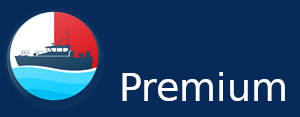For "Der Spiegel" (a German newspaper), an experienced pilot and ex-captain analysed the accident of the freighter Ever Given, which blocked the Suez Canal for days, on the basis of documents. His conclusion: the captain and pilot made serious mistakes during the passage.
The accident of the freighter Ever Given, which ran into the bank of the Suez Canal on 23 March and blocked the canal, resulted in costs of several hundred million: For six days there was no way through the canal; 400 ships had to put up with expensive waiting times.
A sandstorm
was always cited as the explanation for the incident. But the experienced seaman Gerald Immens (62), a long-time captain of tankers and today an instructor and pilot in the Kiel Canal, has another explanation for the disaster. After analysing publicly available data on the fateful voyage of the Ever Given, he concludes that both the captain of the 400-metre-long ocean liner and the pilot on board made serious mistakes, as he explains in an interview with "Der Spiegel".
Gerald Immens considers it "nonsense" that the weather was responsible for the accident. Immensely: "A ship like this even sails in thick fog," he explains. At the time of the accident, there were stormy winds, but they came from behind and did not play a decisive role. However, when the ship entered the canal, it was affected by a considerable crosswind, which reacted sensitively due to the large side area and the thousands of containers on board.
According to the expert, the captain had to compensate for the so-called offset due to the crosswind and correct his course to do so. Since "you can hardly see any water" from the bridge of a huge ship like the Ever Given, the captain and pilot have to rely on GPS data and electronic sea charts for navigation. Immens explains: "Immediately after entering the channel, this AIS data shows a 'heading' of 48 degrees: that is the course the ship is steering - and also the course that could be read from the nautical chart. But over ground, the Ever Given does not keep this course due to the strong crosswinds; she actually only sails around 42 degrees - i.e. towards the left bank of the channel.
Passed through the channel at top speed
So this deviation should have been "added to the course", i.e. the ship should have moved to 54 degrees. But this did not happen for several minutes - according to Immens a "serious navigation error" and an "obvious lack of understanding of the physics of how a ship behaves in such a canal journey". As a result, the Ever Given came closer and closer to the left side of the canal. Then a hydrodynamic effect was added in a fatal way: the mighty mountain of water that the freighter was pushing in front of it pushed the ship to the right at the front, while it was sucked to the left at the back.
In order to compensate for this so-called banking effect, it was decided on the bridge to give more speed, so that the rudder is more strongly impelled and the ship reacts more quickly. "In the short term, this is quite correct," Immens explains. "However, it must not cause the ship to speed up permanently, because then the hydrodynamic effects become much stronger." But this is exactly what happened, he says: Although the maximum speed in the canal is eight knots (just under 15 kilometres per hour), the Ever Given had accelerated to 12.8 knots (22 kilometres per hour).
The ship came away from the left side, but then raced towards the right bank of the canal, whereupon the captain accelerated again - the ship came away again and raced towards the left bank once more. Finally, the giant freighter crashed into the bank at almost 13 knots, whereupon it turned and hit the eastern bank with its stern and became wedged: The Suez Canal was blocked. According to Immens, the accident could only have been avoided if the captain had "done everything possible to reduce speed." But this was not apparent from the data at any time.
"We will never know"
What happened on the bridge between the freighter's entry at 5.10 am and the impact at 5.40 am, Gerald Immens does not know. One thing is certain: a captain is dependent on the pilot, but does not like to give him command. Because the pilot is always on ships he has never sailed before. Immensely: "Imagine you are sitting in an Airbus A380 and the co-pilot says over the loudspeaker: 'I've never flown such a huge thing before and I'm going to try it out today'. You would break out in a sweat." The pilot gives the commands, but the ship's command must "absolutely remain one hundred per cent focused and always pay attention."
After the ship was dredged up in March, Egypt held it until the owners paid a certain sum for the damage. In the settlement, it seems they agreed to keep quiet about who was to blame. And Panama, where the Ever Given is registered, is "not exactly known for in-depth analyses of such incidents." Immensely: "I'm afraid the public will never know what really happened on that bridge."


